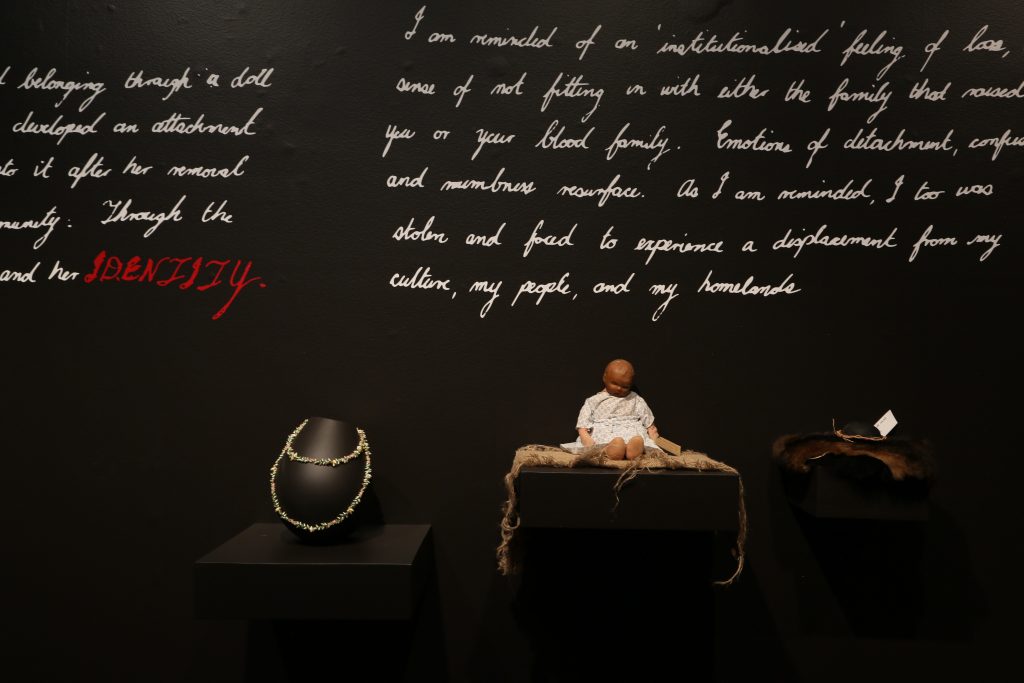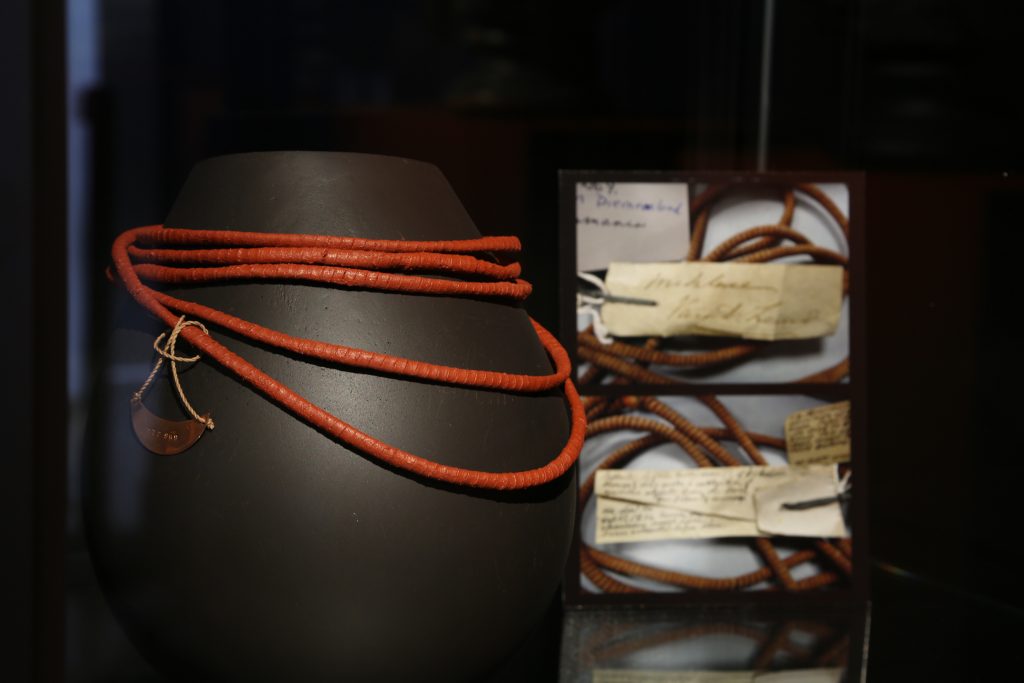
Installation view, taypani milaythina-tu – Return to Country, Tasmanian Museum and Art Gallery, 2022.
This ground-breaking exhibition presents creative work from 20 Tasmanian Aboriginal artists responding to relationships between community and Ancestral objects, particularly those held in institutions outside lutruwita/Tasmania.
Ancestral objects from collections around the world will return to lutruwita to be exhibited alongside these contemporary responses, some of which are by descendants of the original makers, representing generational reconnection across time and place.
taypani milaythina-tu: Return to Country follows previous Tasmanian Aboriginal community–TMAG partnership projects kanalaritja: An Unbroken String(2016–20) and tayenebe: Tasmanian Aboriginal Women’s Fibre Work (2008–11). This important exhibition is an ambitious project presenting a reconnection between people, objects and Country.
The Tasmanian Aboriginal community has worked tirelessly to return Ancestors from international collections and institutions to our homeland, this island, lutruwita, to finally rest.
Aligned with this responsibility is the need to also return cultural objects home. This work of reunification, bringing people, Country and Ancestral objects back together, has been coming into focus for decades. Reconnection forges a future out of a past devastated by the violence of colonisation.
Many hundreds of precious Ancestral cultural forms taken in the 19th century are held globally outside of Tasmanian Aboriginal management, or ease of access. The physical absence of historic cultural objects from Aboriginal community hands impedes the remaking of these forms into everyday life. The reincorporation of historic items that embody our Ancestral stories, memories, and resilience into living history and everyday life-knowledge is critical for ongoing transmission to future generations. Making these objects also returns people to Country, where these objects were and are made and used.
Refinding, accounting for and attending to these exiled objects and their future is ongoing work for the Aboriginal community. Despite the horror and legacy of Empire, the vast distances and differences in language and culture, new international relationships might emerge.
Twenty Tasmanian Aboriginal artists and cultural makers share in taypani milaythina-tu: Return to Country their creative responses to the stories of Ancestors, their lives, and the temporary return home of some of their cultural works.
Historic cultural objects are arriving for extended loans from various institutions: Musée du Quai Branly, Paris and the British Museum, London hold the oldest surviving rikawa (kelp containers); the Field Museum, Chicago holds a unique cordage necklace; and Pitt Rivers Museum, Oxford the only known model reed canoe and string necklace. Long-missing shell necklaces, twined baskets, wooden, stone and bone tools, domestic objects and artworks have returned to lutruwita from the National Museum of Scotland, Edinburgh, Victoria and Albert Museum, London, University of Cambridge Museum of Archaeology and Anthropology, Cambridge, World Museum, Liverpool and Derbyshire Record Office, Matlock to join those sent by Museums Victoria, Melbourne, Queen Victoria Museum and Art Gallery, Launceston and the National Gallery of Australia, Canberra.
Cultural material returned on loan for this exhibition is a small selection of our globally dispersed cultural heritage. There is much work still to be done. We hope that taypani milaythina-tu: Return to Country contributes to the pathway of future unconditional permanent returns.
Artists:
Andrew Gall, Bianca Templar, Bonnie Starick, Cheryl Mundy tremanya, Cheryl Rose, Colleen Mundy, Dave mangenner Gough, Janice Ross, Jeanette James, Jillian Mundy, Lillian Wheatley, Lola Greeno, Louise Daniels Rex Greeno, Takira Simon-Brown, Teresa Green, Theresa Sainty maikutena, Vicki-Laine Green, Vicki West Zoe Rimmer.

Installation view, taypani milaythina-tu – Return to Country, Tasmanian Museum and Art Gallery, 2022.
SOURCE: Tasmanian Museum and Art Gallery, Hobart (AUS).